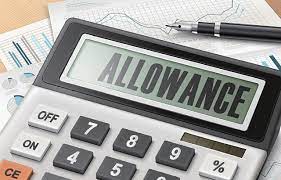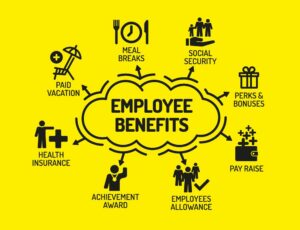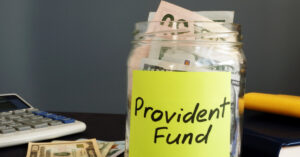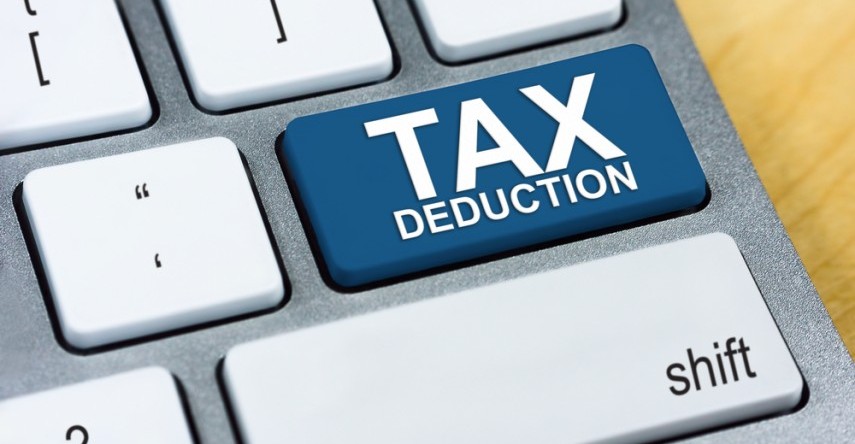Before learning about the computation of income from salaries, let’s understand the sections covering the same.
Income is of two types- taxable and exempt. Exempted incomes are not taxable under section 10. Taxable income has five heads of income- Income from House Property, Business and Profession, Capital Gains, Salaries, and other sources.
The following three sections help in the computation of income from salaries:
- Firstly, section 15- Components of Income from Salaries
- Secondly, section 16- Deductions for Salary
- Lastly, section 17- What is Salary
Moreover, computation of income from salaries is possible only if there is an employer-employee relationship. For instance, a firm has three active partners. Here, partners are not the employees of the firm but the owners. Hence the income comes under the income head of business and profession.
Another example, a professor in ABC college receives a salary from the college and exam remuneration from Mumbai University for paper correction. The salary received from ABC college falls under Income from Salaries. But the exam remuneration falls under the income head of other sources because there is no employer-employee relationship between the professor and the Mumbai University.
Components of Income from Salaries
Basic Salary
The fixed component of salary which is fully taxable.

Allowances
There are five types of allowances that employees receive over and above basic salary:
Dearness Allowance (DA)
An allowance calculated on basic salary, employer designation, etc. The basic salary remains fixed, but the dearness allowance fluctuates according to the inflation rate. It is fully taxable. But in the case of private employees, the basic salary also changes.
House Rent Allowance (HRA)
On receiving HRA, the least of the following is allowed as an exemption (not taxable)- 50% of salary (in case of metro cities) and 40% of salary (in case of non-metro cities) or the actual HRA received or Rent paid (-) 10% of the salary
Allowances subject to exemptions
Allowances like travel, daily, conveyance, research, uniform, etc. are exempt up to the amount spent or allowance received, whichever is less. For example, if an employee receives a travel allowance of ₹1000 but spends ₹1200. Hence, the exemption amount is ₹1000. But if the employee spends only ₹700, the exemption is ₹700, and the remaining ₹300 is taxable.
Allowances with the specific exemption as per Income Tax Act
- Children’s Education Allowance has a maximum exemption limit of ₹100 per month per child, up to two children. Hence, every year for one child, the employee gets an exemption of ₹1,200, and for two children, an exemption of ₹2,400.
- Children Hostel Allowance has an exemption limit of ₹300 per month per child up to two children. Hence, every year, for one child, the employee gets an exemption of ₹3,600, and for two children, an exemption of ₹7,200.
- Transport Allowance exemption is only applicable for a disabled person. The maximum exemption is ₹3,200 per month. Further, for other employees, it is fully taxable.
- Allowance for transport employees, only applicable to employees working in the transport sector. Further, the maximum exemption is the least of the two- ₹10,000 per month or 70% of the allowance amount.
Entertainment Allowance and others
Allowance for refreshments amount spent on clients. They are fully taxable.

Arrears of Salary
Salary due but not received is fully taxable. For instance, in August 2020, the government declared that the Dearness Allowance would increase w.e.f. 1st January 2021. But employees used to receive DA as per old rates. Hence, DA for the eight months (as per new rates is arrears due but not received. It is fully taxable. Another example, the outstanding March salary, is still considered for the computation of income from salaries.
Advance Salary
One also needs to consider the advance salary received for the computation of income from salaries. It is also fully taxable. For example, December salary received in November in advance.
Perquisites
Perquisites are the non-monetary benefits provided to the employee. For example- car, rent-free accommodation, etc. It is fully taxable. Moreover, it is exempt if used for office use. If it is used for personal use or both (office and house), it is fully taxable.
Also, when the employer pays the life insurance premium of the employee, it is fully taxable as it is a perquisite. But, importantly, in the case of Mediclaim, it is an exemption.

Contribution of Employer to Provident Fund
When an employee contributes to Provident Fund, it is an investment/expense and not an income. When the employer contributes to:
- Statutory Provident Fund- Fully Exempt
- Unrecognized Provident Fund- Fully Exempt
- Recognized Provident Fund- Exempt up to 12% of salary
Moreover, the interest received from:
- Statutory Provident Fund- Fully Exempt
- Unrecognized Provident Fund- Fully Exempt
- Recognized Provident Fund- Exempt up to 9.5% of the rate of interest
Awards or Rewards
- Firstly, when an employee receives an award or reward from the employer, it is fully taxable.
- Further, when an employee receives an award or reward from the government, it is fully exempt.
- Lastly, when an employee receives an award or reward from any other person, it is taxable under income from other sources.
Others
- Bonus is fully taxable if received and not just declared
- The commission is also fully taxable.
- Leave Salary Retirement received before retirement is fully taxable.
- Reimbursement of medical expenses is fully taxable. But reimbursement of other expenses such as travelling, and telephone is fully exempt. If an employee spends travelling expenses on the company’s behalf, the amount gets reimbursed by showing bills or vouchers.
Post-Retirement Benefits
Amount towards Provident Fund
Any income from Provident Fund (includes all- statutory, recognized, public, and unrecognized) is fully exempt for all employees (govt and private).
Pension
- Uncommuted or monthly pension is fully taxable for all employees.
- Commuted or lumpsum pension is fully exempt for government employees.
- Further, commuted pension for a private employee is taxable with some exemptions. If gratuity is received, the lower of the two is exempt– the amount of lumpsum pension or 1/3 of the total pension amount.
- Moreover, if gratuity is not received, the lower of the two is exempt– the amount of lumpsum pension or 1/2 of the total pension amount.

Gratuity Received
- Gratuity is fully exempt for a government employee.
- For a private sector employee, gratuity is exempt if received by the family members after the employee’s death.
- Moreover, in the case of a private sector employee, if the Gratuity Act 1972 is applicable, then the least of the three is exempt– 15/26*last salary drawn*number of service years or amount of gratuity received or a maximum limit of ₹20,00,000.
- And if the Gratuity Act 1972 is not applicable, then the least of the three is exempt– ½* last salary drawn*number of service years or amount of gratuity received or a maximum limit of ₹20,00,000.
- Moreover, if the gratuity act is applicable, Salary= Basic + DA and round off the years of services
- Further, if the gratuity act is not applicable, Salary= Basic + DA+ Commission and ignore the number of months.

Amount Received on VRS
- Voluntary Service Retirement is a one-time benefit for an employee. To avail of the benefit, the criteria are- a minimum of ten years of service in the company and 40 years of age.
- It is taxable with exemptions for all employees.
- Exempt the least of the three– 3* last salary drawn*number of service years or amount of VRS received or a maximum limit of ₹5,00,000.
- Moreover, salary= Basic + DA+ Commission and ignore the months for years of service.

Retrenchment Compensation
- Retrenchment means termination of employment.
- If the central government approves the retrenchment compensation, it is fully exempt.
- In other cases, the least of the three is exempt– 15/26*average salary per month*number of service years or amount of compensation received or a maximum limit of ₹5,00,000.
- Moreover, average Salary= Basic + DA+ other Allowances + Perquisites + Leave Travel Concession and round off the years of service.

Leave Salary Encashment
- If received before retirement, it is fully taxable for all employees.
- Further, after retirement, it is fully exempt for government employees.
- Moreover, for a private employee, it is taxable with some exemptions. The least of the four is exempt– 10 months*last salaries drawn or salary per day*unutilized leaves or amount of leave salary encashment received or maximum limit of ₹3,00,000.
- Moreover, salary= Basic + DA+ Commission and ignore the months for years of service.

Deductions under Section 16 for computation of Income from Salaries
- Firstly, there is a standard deduction of ₹50,000.
- Secondly, Entertainment Allowance is also given as a deduction under section 16, for government employees only. But first, it gets added under ‘Allowances’ and then gets deducted.
- Lastly, Professional Tax paid gets deducted under section 16. Professional tax is the amount paid to the government for providing employment opportunities.
Illustration: Computation of Income from Salaries
Mr Sharma was working as an accountant at Axis Bank. Further, he retired from service on 31st March 2021 from Axis Bank after completing 17 years and 7 months of service. He furnishes you with the following information for the assessment year 2021-22.
Firstly, he received an income of ₹10,000 per month. Further, he receives a telephone allowance of ₹20,000, out of which ₹15,000 was spent. He is also given a car for office and personal use, and the perquisite value of this facility is ₹5,000. The company deducted Profession Tax ₹1,000/ during the year. He also received the “Best Employee of the year” award of ₹15,000 on 30th January 2021 from the employer.
Moreover, on retirement, he received a gratuity of ₹1,00,000 (not covered under the payment of gratuity act) and a leave salary of ₹ 20,000 (out of which ₹ 5,000 is exempt).
| PARTICULARS | AMOUNT (Rs.) | AMOUNT (Rs.) |
| Basic Salary (10000 * 12 months) | 120000 | |
| Allowances: | ||
| Telephone Allowance Received | 20000 | |
| (-) Amount Spent | 15000 | 5000 |
| Award: Best Employee of the Year | 15000 | |
| Perquisites: Car for office and personal use | 5000 | |
| Post-Retirement Benefits: | ||
| Gratuity received | 100000 | |
| (-) Exempt (WN 1) | -85000 | 15000 |
| Leave salary (On Retirement) | 20000 | |
| (-) Exempt | -5000 | 15000 |
| GROSS SALARY | 175000 | |
| (-) Deductions U/S 16: | ||
| Standard Deduction | 50000 | |
| Entertainment Allowance (only govt. employees) | NA | |
| Professional Tax paid | 1000 | -51000 |
| NET TAXABLE SALARY | 124000 |
WN 1: Gratuity Exemption (Gratuity Act not applicable)
| Exempt least of the following: | ||
| Firstly, 1/2 * last salary per month (basic + DA + comm) *completed years of service | 85000 | 1/2*(10000+0+0) *17 |
| Secondly, actual Gratuity received | 100000 | |
| Lastly, maximum limit | 2000000 |




